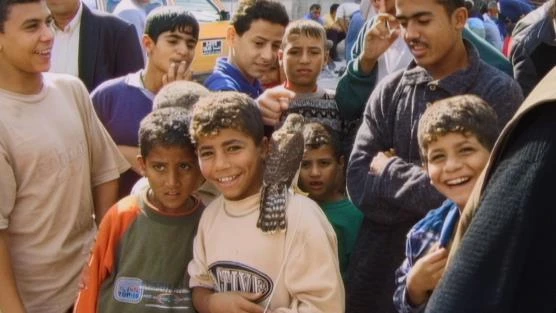International Feature Film Competition
'With Hassan in Gaza' by Kamal Aljafari is a cinematic reflection on memory, loss, and the passage of time, capturing a Gaza of the past and lives that may never be found again.
'With Hassan in Gaza' by Kamal Aljafari is a cinematic reflection on memory, loss, and the passage of time, capturing a Gaza of the past and lives that may never be found again.
▶ Watch Trailer
Three MiniDV tapes shot in 2001 are recovered two decades later, revealing a journey through Gaza that began as a search for a former prison mate and unfolded as a road trip with a local guide, Hasan, now lost to time and war. Streets, markets and shorelines appear with unguarded immediacy; gestures and voices return from a place that no longer exists in the same way. The footage is presented in the order it was found, allowing the images to ‘make’ the film and the archive to lead. An homage to people and places erased, a meditation on catastrophe and the poetry that resists, the film recognises the archive as both memory and evidence, asking what images can still do when the present is marked by devastation.
Rather than reconstructing events with commentary, the footage shows the passing textures of a day, conversations rising and falling, so that witnesses emerge from attention, not assertion. What begins as documentation becomes an ethical stance: to hold, to look again, to let life reappear where it seemed unseeable. The sense of a loss lingers, as if the material had waited for its moment to speak. By returning to what was recorded before, the film opens a present-tense encounter with absence, honouring those who may never be found and restoring to images the humane weight of time.
Three MiniDV tapes shot in 2001 are recovered two decades later, revealing a journey through Gaza that began as a search for a former prison mate and unfolded as a road trip with a local guide, Hasan, now lost to time and war. Streets, markets and shorelines appear with unguarded immediacy; gestures and voices return from a place that no longer exists in the same way. The footage is presented in the order it was found, allowing the images to ‘make’ the film and the archive to lead. An homage to people and places erased, a meditation on catastrophe and the poetry that resists, the film recognises the archive as both memory and evidence, asking what images can still do when the present is marked by devastation.
Rather than reconstructing events with commentary, the footage shows the passing textures of a day, conversations rising and falling, so that witnesses emerge from attention, not assertion. What begins as documentation becomes an ethical stance: to hold, to look again, to let life reappear where it seemed unseeable. The sense of a loss lingers, as if the material had waited for its moment to speak. By returning to what was recorded before, the film opens a present-tense encounter with absence, honouring those who may never be found and restoring to images the humane weight of time.

